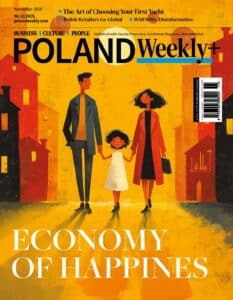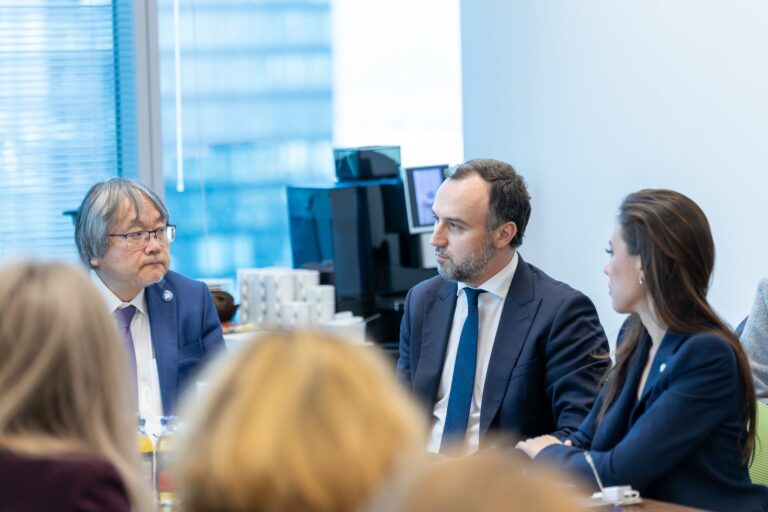Poland’s Demographic Shift
Current demographic trends could lead to a more than 12% decline in Poland’s workforce by 2035, warns the Polish Economic Institute in its latest report.
Poland is facing a demographic crisis that could have severe consequences for its labor market. A recent report from the Polish Economic Institute (PIE) warns that by 2035, the number of workers in the country could decrease by 2.1 million—12.6% of the current workforce. This decline will have far-reaching implications for key sectors, including education, healthcare, industry, and agriculture. If this trend continues, the Polish economy could experience a 6-8% drop in GDP, according to PIE’s projections.
The most significant losses are expected in industry, where the workforce could shrink by 11%, and in education and healthcare, which could see declines of 29% and 23%, respectively. These sectors are particularly vulnerable because younger generations entering the labor market will not be sufficient to replace the workers exiting due to retirement.
A Shrinking Workforce and Its Economic Impact
Demographic changes are already affecting the size of the working-age population in Poland. By 2030, the number of people aged 20-64 is projected to fall by 1.1 million, a 4.9% decrease from 2022. Looking further ahead, the decline becomes even more alarming, with a 9.7% drop expected by 2040 and a staggering 20% by 2050.
PIE’s analysis suggests that this demographic decline will particularly affect industry, trade, education, and agriculture. In nominal terms, the industrial sector could lose 805,000 workers, trade and vehicle repair could shed 423,000 jobs, education 414,000, and agriculture 406,000. While younger workers will continue to enter the workforce, their numbers will not be enough to offset these losses.
“We estimate that by 2035, Poland’s workforce will shrink by 2.1 million people, which represents 12.6% of the current employment levels,” said Dr. Paula Kukołowicz, head of the Sustainable Development Team at PIE. “This decrease is primarily driven by the retirement of workers aged 50-59/64 and the smaller cohorts of younger workers entering the labor market.”
Without intervention, the ripple effect could significantly reduce Poland’s economic growth, with a projected GDP loss of 6-8% due to labor shortages in industrial sectors alone.
Activating Poland’s Inactive Workforce
Poland still has a significant reserve of economically inactive people within the working-age population, including young adults aged 20-24, people with disabilities, and caregivers, especially young mothers. Only 14% of Poles aged 20-24 combine work and study, compared to the EU average of 21%. Furthermore, only 34.3% of people with disabilities are employed, compared to 73.6% of the general population, leaving a 40% employment gap. In the EU, this gap is much smaller at 20%.
“Under favorable conditions, we estimate that Poland’s labor market could grow by an additional 1 million workers,” commented Jędrzej Lubasiński, senior analyst in the Sustainable Development Team at PIE. “These are people who, for various reasons, cannot work full-time or on-site, such as students, caregivers, or people with disabilities. To bring them into the labor market, we need to create flexible working conditions, such as part-time, remote, or hybrid work.”
The Need for Automation and Migrant Workers
While activating the economically inactive population could help mitigate the workforce decline, it won’t be enough to fully counter the demographic downturn. Automation, especially in the industrial sector, could play a key role in maintaining productivity despite a shrinking labor force. However, Poland is currently lagging behind other EU countries in this area, with only 54.6 robots per 10,000 industrial workers. In comparison, Germany has 256 robots, Sweden 297.6, and regional peers like the Czech Republic and Slovakia have 165.9 and 146.5, respectively.
In addition to automation, immigration could help fill labor gaps. Between 2016 and 2023, nearly 944,000 foreign workers entered the Polish labor market. However, this trend appears to be slowing, with only a 6% increase in 2023, compared to an average annual growth rate of 30% between 2016 and 2022. According to the Social Insurance Institution (ZUS), Poland would need to attract an additional 2.6 million foreign workers by 2033 to maintain its current demographic balance.
“Activating the inactive workforce, implementing new technologies, and increasing labor productivity—along with supporting migration—can help soften the blow of demographic changes,” said Dr. Kukołowicz. “However, these measures won’t fully halt the decline in Poland’s development potential. As a result, Poland’s GDP growth trajectory will likely be lower than it could have been if the workforce remained stable.”
Without significant changes to labor policy, investment in automation, and efforts to attract more migrant workers, Poland’s shrinking workforce could have long-lasting consequences for its economy. The stakes are high, and the time to act is now.







